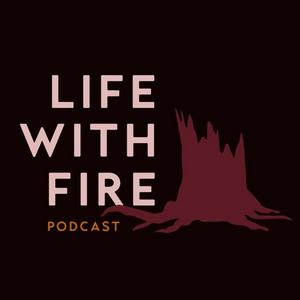Community Resilience Series Ep.3: Preparing for and Recovering From Megafires with Butte County Fire Safe Council Executive Director Taylor Nilsson
Welcome to the third and final episode of our Community Wildfire Resilience Series, supported by Fire Aside!In this episode, we spoke with Butte County Fire Safe Council Executive Director Taylor Nilsson. Butte County, CA has seen more catastrophic fire in the last eight years than most places in the West, possibly even the world. Starting with the Camp Fire in 2018 (85 killed, 14,000 homes lost), then the North Complex in 2020 (16 killed, 2,300 structures lost), then the Park Fire in 2024 (700+ structures destroyed), Butte County has seen 50% of its Wildland Urban Interface impacted by wildfire in the last seven years, and over 90% of its WUI impacted since 1999. This being the case, folks in this area have a deep understanding not only of preparing for wildfire, but of the long process of recovering from it—while knowing from experience that they simultaneously need to be preparing for the next one. Taylor spoke about the challenges of preparing for more fire while also recovering from—in Butte County's case—multiple deeply impactful wildfires that communities are still reeling from. In what has become an increasingly common occurrence in California, communities can still be deep in the recovery phase as a fire scar cycles back into susceptibility to wildfire. The Camp Fire scar, for example, is becoming increasingly at risk to more wildfire, particularly as these previously forested landscapes have become more brush-dominated post-fire. Reforestation and restoration in such landscapes (particularly those undergoing a vegetation type conversion) is tricky, and Taylor speaks to this too—to the realities of salvage logging and how this practice can fit into sound restoration planning, as well as to the lack of technology to handle the significant biomass that needs to be removed to make recently un-burned landscapes in Butte County more resilient to future fire. We talked about the immense community trauma, and how Taylor and the Butte County staff have worked through their own healing processes while facing this community trauma firsthand. Above all, this episode highlighted the critical work that Fire Safe Councils in California do, in part because they are working one-on-one with community members in many cases and can therefore be a consistent, guiding presence through the wildfire preparedness, response and recovery phases. Communities and residents recovering from wildfire need a sustained, familiar presence like this, and this is exactly the type of thing that reduces recovery timelines and helps communities heal. As we wrap up this series, we want to once again thank Fire Aside for their support of the last three episodes of the podcast. Support like this allows us to keep this thing rolling, and we can't express how grateful we are to our supporters—past and present, including on Patreon! Thank you, thank you, thank you for believing in what we're doing!Check out Butte County FSC on their socials (linked below)! Whether you live in Butte County or not, I think their website and some of their programming is very replicable elsewhere, so give them a follow and remember—imitation is the sincerest form of flattery!Facebook: https://www.facebook.com/buttefiresafeInstagram: https://www.instagram.com/buttefiresafe/?hl=enWebsite: https://buttefiresafe.netLinkedIn: https://www.linkedin.com/company/butte-county-fire-safe-council/ Time Stamps: 00:00 - Episode Start00:42 - Amanda Intro07:39 - Taylor's Background09:45 - Recent Fires In Butte County12:08 - Dealing with Hazard Trees14:56 - Trauma-Informed Care Post-Fire17:36 - Recovery Takes Multiple Years18:52 - Current Butte County Work On Burn Areas21:45 - Cost Of Removing Hazard Trees22:41 - Presence of Blue Stain In Recently Burned Areas24:56 - Salvage Logging as Part of Restoration Planning25:45 - Mill Infrastructure In Butte County28:26 - Butte County Population Response29:47 - Participation Rates in Fire Safe Council Programming31:35 - How Fire Aside Has Bolstered The Work the Butte County FSC Is Doing38:04 - Communities Are Struggling With Staffing—What Does This Mean For Recovery?40:12 - Fire Safe Council In Collaboration with Other Local Entities41:06 - Butte County Collaborative Group43:51 - The Importance of Sharing Lessons Learned 45:43 - Prioritizing the Knowledge and Practices Of Local Indigenous Tribes46:45 - Amanda Outro47:32 - End Of Episode


